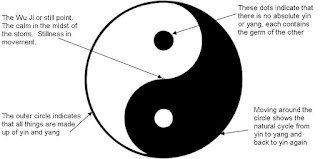Paradoxically, we set our knowledge and belief as a reference / universal point when judging other cultures. We compare what we know or believe to new and different views sometimes curiously wondering how wrong they are. You are basically trapped in stability issue of which I have written in Leadership and stability, such stability that you have fallibly perceived as security due familiarity with your ‘not changing’ home place culture.
Unfortunately, in this you are wrong. There is nothing stable in this Universe. Changes and differences are all around us, also when meeting other people, cultures or leadership styles.
Differences are the outcome of Gerhard Hofstede project when asked to unify IBM corporate culture across the globe. The study was conducted within IBM between 1967 and 1973 and covered more than 70 countries. Hofstede built a methodology of different countries and cultures and how they interact based on six different categories of cultural dimensions:
- Power Distance that expresses the degree to which the less powerful members of a society accept and expect that power is distributed unequally.
- Individualism vs. Collectivism which focuses on the questions about whether people prefer a close knit network of people or prefer to be left alone to fend for themselves.
- Masculinity vs. Femininity where masculinity represents a preference in society for achievement, heroism, assertiveness and material reward for success; and femininity, stands for a preference for cooperation, modesty, caring for the weak and quality of life.
- Uncertainty Avoidance that expresses the degree to which the member of a society feels uncomfortable with uncertainty and ambiguity.
- Long-term vs. Short-term Orientation where Long-term orientation dimension can be interpreted as dealing with society's search for virtue and are careful how they shape today not to distort tomorrow.
- Indulgence vs. Restraint that identifies the extent to which a society allows ‘relatively free gratification of basic and natural human desires related to enjoying life and having fun’.

Commonly used and cited methodology unfortunately is a perfect “Descartes model of dualism” so appreciated in Western hemisphere way of thinking (see: Dualism vs. Yin-Yang). With different dimensions it brings some diversity but does not allow or imply the changes within cultures.
Is there a solution that may contribute and add change to cultural dimensions methodology?
We could probe Tony Fang Yin-Yang (see: Yin & Yang in Leadership of culture) perspective that allows us to see that all cultures, no matter how different they may appear to be, share essentially the same potentials in value orientations … but then again they are subject to change as well. The idea of Yin and Yang is mostly found in philosophies and religions of Far East. The Chinese long ago understood the Nature as the interplay of dualities with both, complementary and opposing characteristics.
Following Yin and Yang principle we could try to superimpose to cultural dimensions methodology a dynamism that is lacking. One could say that Yin and Yang involves principles connected to duality that resembles to western one.
But it is not. Let me explain why.
 In the first principle– ‘holistic duality’ - Yin and Yang postulates that a phenomenon or entity cannot be complete unless it has two opposite elements. The next principle – ‘dynamic duality’ - suggests that opposite elements will mutually transform into each other in a process of balancing under various conditions. Those two opposite elements are contrary yet interdependent. They exist as opposites in unity to mutually affirm (for consistency and equilibrium) and mutually negate. So Yin and Yang introduces dynamism of change within dualism polarity.
In the first principle– ‘holistic duality’ - Yin and Yang postulates that a phenomenon or entity cannot be complete unless it has two opposite elements. The next principle – ‘dynamic duality’ - suggests that opposite elements will mutually transform into each other in a process of balancing under various conditions. Those two opposite elements are contrary yet interdependent. They exist as opposites in unity to mutually affirm (for consistency and equilibrium) and mutually negate. So Yin and Yang introduces dynamism of change within dualism polarity.Adding this knowledge to cultural dimensions’ methodology brings dynamism which all cultures have in their roots. All cultures are constantly evolving and changing although participants sense them as stable and not changeable.
Now, let’s move from all this different cultural issues to their impact on leadership.
Have you lately read a book on leadership? Where from was the author of the book? Did the author come from the western civilization? Most probably.
Was the book culturally independent or dependent?
How do we know this? Think about basic principles that were offered throughout the text and how they were explained. Compare it to your cultural background. Is it similar or different?
Reading these sort of books, blogs, papers or other kind of publications I can argue that what we may see/read today is one sided approach to leadership. A western one!
With all before said, do you still believe that one way can fit all? That people will follow the same leadership or management principles no matter where they come from?
Has the time come to change this paradigm?







Good post, all the people who are into corporate world must read this report, it have many things to take from. Thank you for sharing it with us.
ReplyDeleteThank you so much for such a positive and nice comment. It is meant for all to read it.
DeleteA debt of gratitude is in order for imparting your considerations and thoughts to us. Keep up the great work as i really liked this post. Good job,.
ReplyDelete